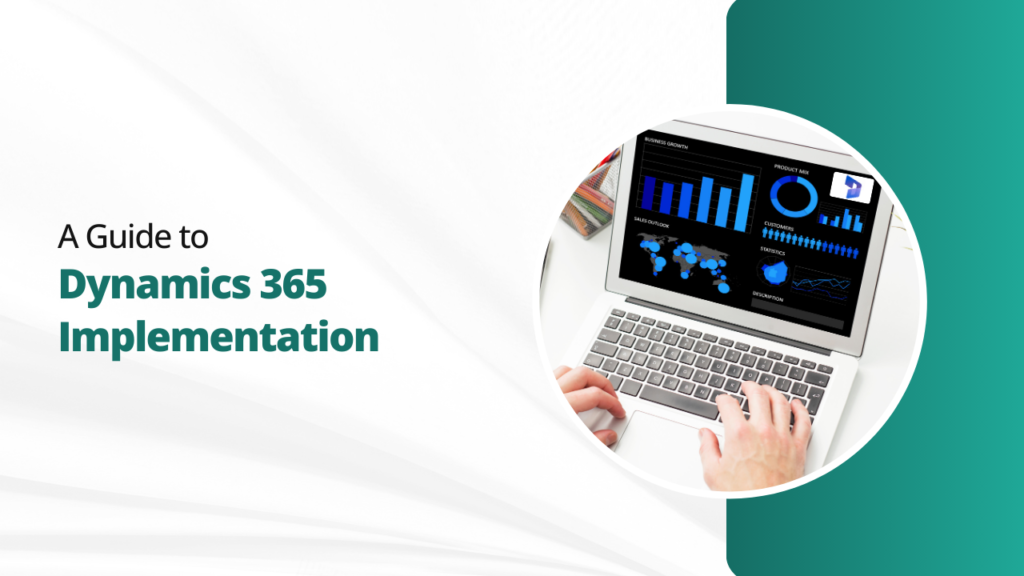Picture this: you are a loyal customer at one of your favorite clothing stores. You’ve just purchased a new outfit, but a few days later, you notice a small tear in the seam of your top. Frustrated, you reach out to the store’s customer service, and they swiftly respond by scheduling an appointment or giving you a voucher to replace the article.
In the past, this interaction would have been the end of the story. Store would address the issue reactively, fixing the problem only after it had occurred. But in today’s retail landscape things are quite different. Little do you know, the store’s advanced technology, powered by Dynamics 365 Implementation, is already working behind the scenes.
Now, as you make a purchase online or in person, and head to the checkout, your items are scanned and your loyalty account is updated automatically. The store is collecting data from your previous interactions, including the exchanged article. This data anticipates your needs and preferences on which basis you receive personalized emails from the store, thanking you for your visit or recent purchase. They may offer a discount on your next purchase as a gesture of inconvenience with your top.
This data flows from your interactions with the store, with the help of Microsoft Dynamics project management, allowing them to take proactive measures to enhance the shopping experience. Therefore, retailers choose a system with effective ERP modules, building stronger relationships with customers.
This guide will help you understand Microsoft 365 implementation best practices that can have an impact on business revenues, sales, and customer experiences.
Understanding Dynamics 365 Implementation
Businesses need visibility in their operations and data, to arise to meet the challenges. Having the right tools and resources helps to improve their processes and retain customers, thus improving sales. Dynamic project management of Microsoft is a useful tool for such purposes.
Also known as D365, it is a cloud-based solution comprising CRM and ERP capabilities that seamlessly combine sales, marketing, service, operations, and more.
Implementation of Dynamics 365 can generate various benefits including:
- Effective connectivity throughout the systems
- Valuable insights from data collection
- Improve and shorten the sales cycle
- Improve social engagement and customer satisfaction
- Easy to deploy and scale
- Boosts return on investment
- Helps with automation
Microsoft 365 Implementation Best Practices
Incorporating best practices into Dynamics CRM implementation is essential to maximize its effectiveness in driving business success. To ensure a successful CRM and ERP central implementation with Dynamics 365 services businesses should focus on the following best practices:

Objectives and Goals
The organization’s overall strategy and objectives help align the need for the implementation of the Microsoft project management tool. Clear objectives such as high customer satisfaction or revenue generation boost give a clear vision for the implementation process.
Training and Adoption for CRM
Assembling the right team of employees to execute the implementation is vital. Employees should possess the right knowledge about their business to provide a constructive base of requirements about how D365 will affect their daily business activities.
Businesses should focus on staffing subject matter experts who are well aware of the business and can ensure successful project management Dynamics implementation.
ERP Project Management Analysis
Conducting a thorough business analysis will identify the inefficiencies in the processes and areas for improvement. With the help of analysis, it will become the roadmap for tailoring Microsoft ERP Implementation. Collaborate with the company’s stakeholders to map out the existing workflows and documentation.
Data Migration and Cleansing
Shifting from on-premises infrastructure to cloud-based solutions requires successful Dynamics 365 migration. Therefore, to ensure successful migration from one infrastructure to another, the evaluation of the quality and quantity of your data sources is required. Composing a comprehensive data migration strategy such as data mapping, data transformation, and data validation is essential. You will need to cleanse and de-duplicate the data for accuracy and the D365 environment.
Configuring Microsoft 365 with Process
Use Dynamics 365’s setup and customization features to match the system to your particular business procedures. Adjust fields, forms, and workflows to suit your unique needs. To improve user experience and expedite tasks, apply automation and business rules.
Integrate Existing Workflows
The power of Dynamics 365 implementation is visible with proper integration with other applications and tools within the systems. A strong data exchange between the applications including ERP, CRM, and other marketing platforms will help boost the existing workflows to ensure data consistency and generate real-time insights.
Quality Assurance and Testing
Before launching, thoroughly test your Dynamics 365 setup to identify and fix any possible issues. Carry out user acceptability, integration, and functional testing. Involve end users in the testing procedure to confirm the usability and functionality of the system.
Project Management Deployment and Monitoring
Come up with a strong and effective deployment strategy that meets your business needs. A full-scale launch will monitor the performance and any issues that may occur at the time of Microsoft Dynamics project management implementation.
After the successful implementation of D365, monitor the performance of the workflows and the customer feedback. Monitor and evaluate your key performance indicators to ensure the right results. Or if this is your first time utilizing a project management tool, you can always partner up with TechImplement to accommodate you with the data migration and successful implementation of Dynamics 365.
How Long Does it Take to Implement Dynamics 365
The duration for CRM implementation varies depending on several factors:
Project Scope
The scope of Microsoft project management plays a significant role in determining the duration of implementation. A narrow scope such as a single module or application with D365, can be completed in a fast turnaround as compared to a larger-scale project with multiple modules and customization.
Process Complexity
The complexity of business processes and workflows impacts the timeline for implementation. A complex model and intricate workflow require additional time to ensure successful customization and configuration.
Customization Level
Developing custom entities, workflows, and integrations is distinctive for each business. Some industries may take longer to complete the customization, especially with an out-of-the-box functionality.
Resources Availability
Availability of resources like skilled personnel, time, and budget influence the Dynamics 365 implementation timeline. Projects with ample resources allocated to them may progress more quickly as compared to projects with limited resources may experience delays.
Driving Growth and Innovation with Dynamics 365
By combining CRM and ERP features, Microsoft Dynamics 365 goes beyond conventional business software and empowers businesses in the complex business environment of today. Dynamics 365 stands out as a beacon of flexibility for companies looking to remain relevant and agile. Through the strategic implementation of its capabilities, firms may enhance consumer relations, propel growth, and guide crucial decisions.
Starting the process of implementing Microsoft Dynamics 365? Our team of professionals is prepared to help you navigate the process and make it effective and easy. Together, let’s make your Dynamics 365 experience a huge success. To begin your transformation, get in touch with us right now!




